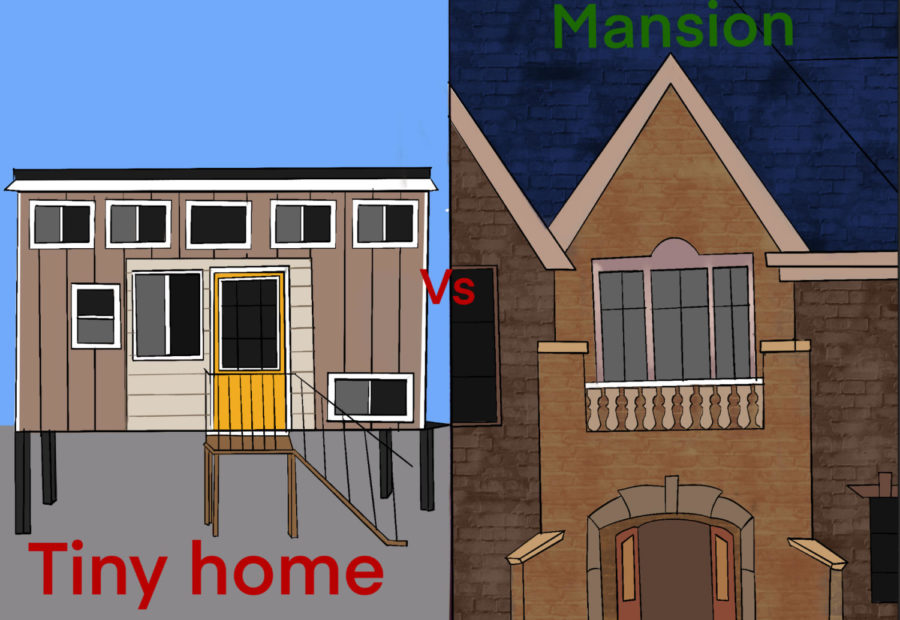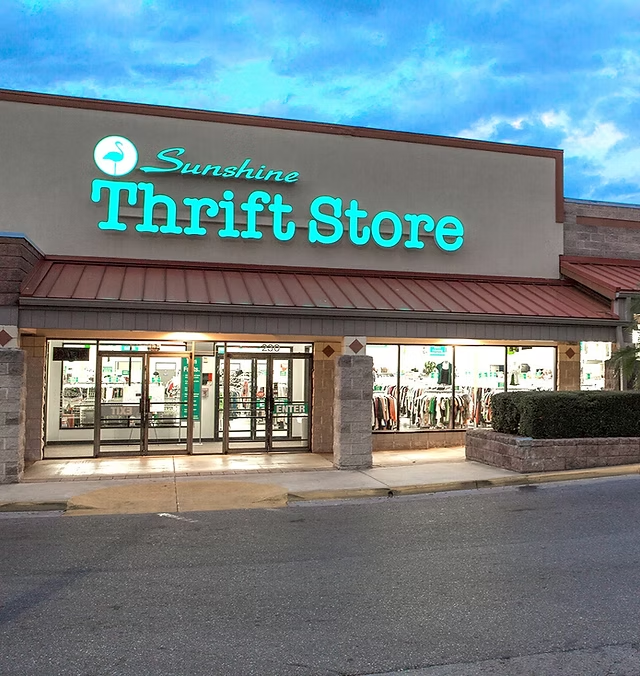Time for Tiny Homes
Tiny homes may be the future of housing.
Photo Janiece Mitchner
A drawing contrasting a tiny home to a mansion. As land become more scarce, many are seen moving into tiny homes nowadays.
May 11, 2023
The world population surpassed the eight billion mark on Nov. 15, 2022. This landmark brought about real concerns regarding overpopulation, one of those being land scarcity. Increased globalization and urbanization working in tandem with overpopulation has made land a scarce resource for the average consumer.
This can even be seen in our community of Tampa Bay. As Tampa is becoming one of the fastest-growing cities in the United States, land prices have tremendously increased. Large plots of land in South Tampa sell for millions of dollars, if they are even put up for sale. Most available lands are in more northern areas, however, these are located next to sites of former phosphorus plants where toxic chemicals were mishandled.
“Fertilizer maker Mosaic Co has reached a settlement worth more than $800 million with U.S. regulators over its waste management practices at plants in Florida and Louisiana,” Reuters said in an article regarding the Mosaic lawsuit.
With widespread pollution, overpopulation and economic growth of previously affordable areas comes a scarcity of pristine and habitable land, driving up prices so that many middle-class families are unable to buy plots of land large enough for a home. Tiny homes may be a solution to this problem.
Tiny homes are essentially miniature homes that can be bought premade or ready to assemble at a fraction of the price of what a mortgage and a traditional home would cost. The cost of land is much less as well. Being very small, the homes don’t take up much space, nor do they require much infrastructure to be built, so one can spend more money on customization rather than solely on basic needs.
They’re also very environmentally friendly. With a global climate crisis becoming more dangerous every day, tiny homes require less material to furnish, build and require fewer utilities to heat, cool and maintain. Along with the option to be able to take one’s house completely off the grid, reducing your carbon footprint with a tiny home is a very real option.
While there are many benefits to tiny homes, they may not be the most appealing to all prospective homeowners. Being that they are “tiny,” one will have to deal with special constraints, especially with storage or entertainment. These are similar issues that are dealt with in condominiums and apartments, however, many prospective homeowners tend to desire more space.
As someone who has lived in both a traditionally sized home and a condominium, I have found that I like closeness and low-maintenance lifestyle which a smaller space provides, but I tend to miss having a backyard and a traditional neighborhood. A tiny home could be the solution to this issue.
If you merely would like to move out of the city and into a more peaceful area, then a tiny home is a good choice. Being used to the smaller space, there are very few downsides to shifting to a tiny home. They combine the best of both worlds where someone who is young and single or raising a small family can stay in an affordably priced house and plot of land while still attaining the sought-after “white-picket fence.”











